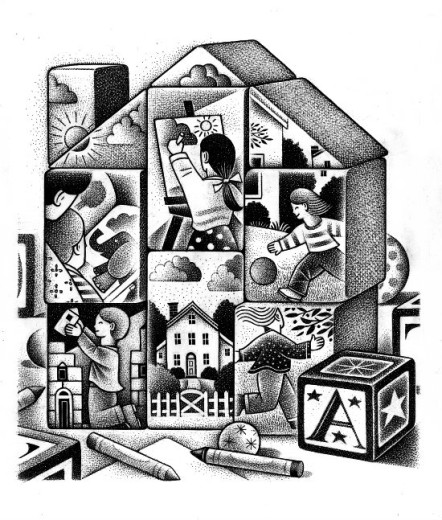Read an excerpt from this article below. You can download the full article by using the link at the end of the excerpt.
Child Care Needs in the U.S.
The United Sates has experienced profound changes in work patterns, family life, and women’s roles since the early years of child care. In 1960, 30 percent of mothers worked outside the home. By 1999, that number had skyrocketed to 72 percent. This change, in turn, has dramatically increased the number of children in need of child care services. Nationwide, 60 percent of working families with children under age five now pay for licensed child care.
In addition, the current focus on the advantage of universal preschool as a strategy to promote later school success points to further demand. Los Angeles County, for example, has committed $100-million a year specifically for preschools. The county plans to serve 117,000 additional four year-olds in 5,000 new preschool classrooms within a decade. Many other regions and states are setting similar goals.
Child care is now being recognized as an important sector of the economy, producing its own significant gross receipts, while contributing to growth and stability within the overall economy …
The traditional “church basement” approach to child care facilities which many of us grew up with can no longer meet anywhere near the entire need. New programs, designed to provide high quality services, will require new facilities which are integrated into our existing communities. What is called for is creative thinking about how child care facilities can be designed and located to best contribute to the neighborhoods they serve.
Child Care Facilities

Child care facilities can serve as strong anchors to their communities. Small, walkable, community-based child care centers and family child care homes can be a key element in strengthening a neighborhood.
Thoughtful placement of child care facilities can help neighborhoods cut traffic. A California report found that parents add five to six miles to their daily commute to drive children to child care or school.
Locating child care near residential areas and high employment centers can contribute to reduced commutes, cross-town traffic reductions, and increased transit ridership. In fact, some communities now consider the development of child care centers as an acceptable mitigation measure for new developments with projected high traffic impacts.
Local businesses (including major institutions like medical centers, colleges, and even government offices) are coming to recognize child care services as an important benefit for their employees, effective in attracting and retaining quality workers, increasing productivity, and promoting a family-friendly image. In the 1984 edition of Fortune Magazine’s “100 Best Companies” only one firm offered a child care program; in the 2000 edition that number had grown to 29. …
Local planning commissions and departments can help encourage employer-sponsored child care programs by advocating the adoption of incentives such as zoning bonuses for business developments which include child care facilities.
Including child care within mixed-use developments is also showing great promise. Affordable housing developers, in particular, have found that adding child care facilities to their residential developments adds to the stability of the households they serve. In the rural community of Watsonville, California, for example, a project located adjacent to the community’s transit center will include 21 units of affordable family housing and a child care center (which will be marketed to families and to downtown workers who use public transportation). …
End of excerpt